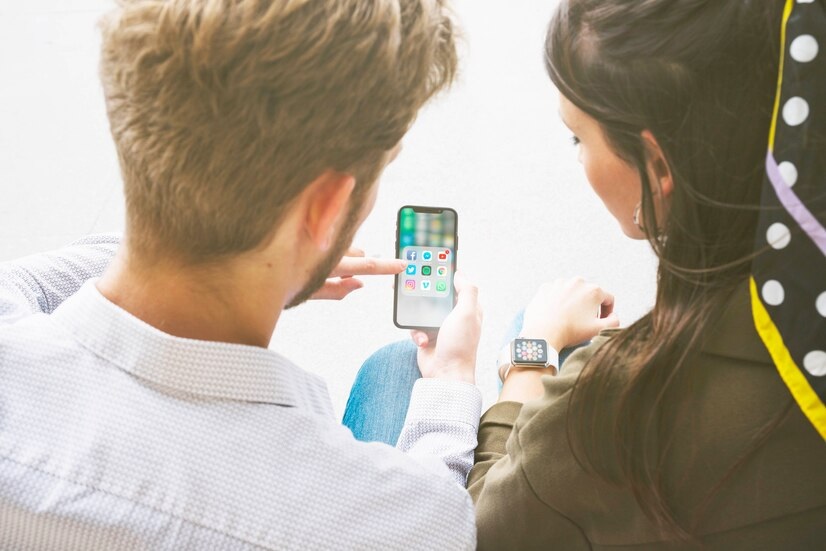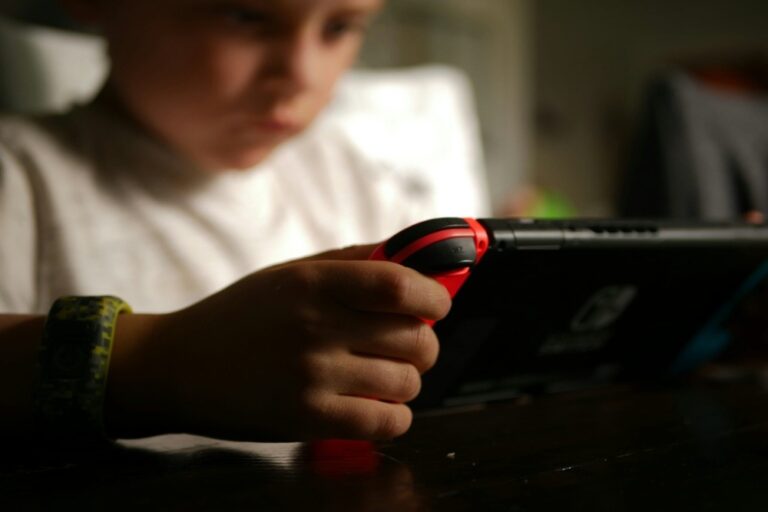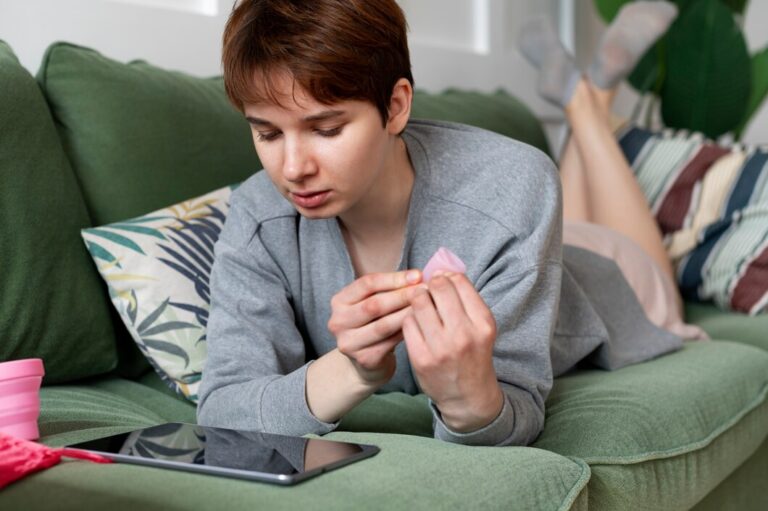
You pick up your phone to check the time, and 30 minutes later, you’re still scrolling. Sound familiar? You’re not alone.
The average American spends 2 hours and 27 minutes on social media daily—that’s over 37 days per year lost to scrolling. Meanwhile, rates of anxiety, depression, and loneliness continue to rise alongside our screen time, with studies from the University of Pennsylvania confirming the direct relationship between social media use and decreased well-being.
As a digital wellness consultant who’s helped hundreds of clients break free from their screen addiction, I’ve witnessed firsthand how a structured digital detox can transform lives. One client reduced her screen time by 70% and reported that her “mind finally feels like it belongs to me again.”

In this comprehensive guide, you’ll discover:
- The hidden psychology behind your social media addiction
- A practical 30-day blueprint to break the scrolling habit
- 50 enriching activities that provide greater satisfaction than any like or comment
- Strategies to maintain a healthier relationship with technology long-term
By the end of this challenge, you won’t just use your phone less—you’ll reconnect with the parts of yourself that social media slowly eroded. Let’s reclaim your attention, one mindful moment at a time.
Understanding Why We Can’t Stop Scrolling
Creating space between you and your screen requires understanding what pulled you together in the first place.
This isn’t merely about weak willpower or lack of discipline. Your brain has been methodically hijacked by some of the world’s most sophisticated technology.
Social media platforms employ armies of engineers and psychologists specifically tasked with keeping your attention. The variable reward system—never knowing when you’ll get that next dopamine hit from a like or comment—creates the same neurological patterns found in gambling addiction.
Research from the MIT Technology Review reveals that social media triggers dopamine release comparable to that of addictive substances. Each notification activates your brain’s reward pathway, training you to check your phone constantly in anticipation of the next hit. One study found that merely hearing your notification sound causes measurable stress responses even when you don’t check your phone.
Social media also meets legitimate human needs: connection, validation, entertainment, and escapism. In our increasingly isolated world, these platforms provide a sense of community and belonging that many people struggle to find elsewhere.
Why is this happening now? Unlike previous technologies, social media combines unprecedented accessibility (your phone is always with you) with algorithms specifically designed to exploit psychological vulnerabilities. We’re navigating a digital landscape that evolved faster than our ability to develop healthy boundaries around it.
By understanding these mechanisms, we can see that breaking free isn’t about willpower—it’s about redesigning your environment and finding healthier ways to meet these fundamental human needs.
10 Warning Signs Your Social Media Use Has Become Problematic
Recognizing unhealthy patterns is the first step toward changing them. While occasional social media use is normal, these signs indicate your relationship with screens may need reassessment:
- You experience phantom vibrations – You feel your phone buzz even when it hasn’t, showing your nervous system has been conditioned to expect notifications
- “Just a quick check” regularly turns into extended sessions – Brief checks consistently expand into 30+ minute scrolling episodes
- Your phone is the first and last thing you engage with daily – Prioritizing social media over morning routines or sleep hygiene
- You feel anxious when separated from your device – Experiencing genuine distress when your phone is inaccessible (nomophobia)
- Social media interferes with work or study – Difficulty maintaining focus on tasks without checking notifications
- You compare yourself negatively to others online – Regular feelings of inadequacy triggered by others’ curated highlights
- Real-life interactions feel less stimulating than online engagement – In-person conversations seem boring compared to the constant novelty of social feeds
- You use social media to escape uncomfortable emotions – Automatically reaching for your phone when feeling bored, lonely, or anxious
- People have commented on your phone use – Friends or family have expressed concern about your screen time
- You’ve tried to cut back but couldn’t maintain it – Previous attempts to reduce usage have been unsuccessful
How many of these signs do you recognize in yourself? If you identified with three or more, a structured digital detox could significantly benefit your mental well-being.
Preparing for Your Social Media Detox Success
The preparation phase is not just helpful—it’s essential for lasting change. Taking time to set clear intentions and restructure your environment dramatically increases your chances of success.
Setting Clear Intentions
Start by clarifying exactly why you want to reduce social media use. Is it to be more present with loved ones? Improve productivity? Reduce anxiety? Research from the Journal of Personality and Social Psychology shows that connecting goals to personal values increases follow-through by up to 80%.
Write down your specific intentions, including:
- What you hope to gain from the detox
- How you want to feel at the end of 30 days
- What values this change aligns with (connection, creativity, peace)
Creating Your Environment for Success
Your environment shapes your behavior more powerfully than willpower alone. Make success inevitable by:
- Deleting social media apps from your phone – This creates friction that prevents automatic usage
- Installing a blocking app like Freedom or AppBlock to restrict social media access
- Setting up auto-replies informing contacts you’re on a digital detox
- Creating a charging station outside your bedroom to prevent night-time scrolling
- Enabling grayscale mode on your phone to reduce visual stimulation
- Turning off all non-essential notifications
- Setting up accountability with a friend or family member
“The most effective way to change behavior is to make the desired behavior easier than the undesired one,” notes Dr. BJ Fogg, behavior scientist at Stanford University. By restructuring your digital environment, you make mindful choices the path of least resistance.
Gaining Buy-In From Others
If your detox will affect others, have direct conversations about your plans. Explain that you’ll be less responsive on certain platforms and why this matters to you. Research from the American Psychological Association shows that social support increases the success rate of behavior changes by up to 65%.
By preparing thoroughly, you’re not just planning a detox—you’re designing a new relationship with technology that honors your deeper priorities and values.
The 30-Day Social Media Detox Challenge Blueprint
Meaningful behavioral change happens in stages, not overnight. This 30-day blueprint guides you through a progressive approach to breaking social media dependency while introducing enriching alternatives.
Week 1: The Digital Reset (Days 1-7)
Objective: Create clear boundaries and begin breaking automatic habits
Actions:
- Delete all social media apps from your phone
- Use a website blocker for desktop social media
- Establish two designated 15-minute “check-in” periods daily (if cold turkey feels too extreme)
- Begin replacing scrolling with alternatives from the mindful activities list
- Log your urges to check social media in a journal
What to expect: The first 3-4 days will be the most challenging. You’ll likely experience FOMO, restlessness, and may habitually reach for your phone. This is normal! Research shows withdrawal symptoms from social media peak around day 3-4 before gradually subsiding.
Week 2: Rediscovering Presence (Days 8-14)
Objective: Deepen awareness of triggers and expand alternative activities
Actions:
- Reduce check-in periods to once daily for 15 minutes (if using)
- Identify your top three social media triggers (boredom, anxiety, etc.)
- Practice the “urge surfing” technique when cravings arise
- Intentionally engage with 5-7 new activities from the mindful list
- Begin a daily 10-minute meditation practice
What to expect: You’ll start noticing increased attention span and presence. Many people report feeling “bored” for the first time in years—embrace this as your brain’s recalibration.
Week 3: Rebuilding Connections (Days 15-21)
Objective: Strengthen real-world relationships and purposeful activities
Actions:
- Schedule at least three in-person social activities
- Continue expanding your repertoire of mindful alternatives
- Write a reflection on how your relationship with technology is shifting
- Create “speed bumps” for when social media returns (time limits, intentional use plans)
- Practice saying no to screen-based activities that don’t serve you
What to expect: Many people experience a noticeable lift in mood and energy by this point. Your ability to focus on single tasks will improve, and you’ll likely feel more connected to those around you.
Week 4: Integration and Future Planning (Days 22-30)
Objective: Consolidate new habits and create a sustainable long-term relationship with social media
Actions:
- Draft your personal “digital wellness plan” for after the detox
- Schedule regular technology-free periods in your calendar
- Curate your feed by unfollowing accounts that don’t add value
- Set up permanent technological boundaries (app timers, notification settings)
- Reflect on which mindful activities brought the most satisfaction
What to expect: By day 30, most people report feeling significantly more in control of their technology use. The constant pull of social media diminishes, replaced by a greater sense of choice and intentionality.
50 Mindful Activities to Replace Social Media Scrolling
The key to a successful digital detox isn’t just stopping negative habits—it’s replacing them with fulfilling alternatives. These activities are categorized to match different needs that social media typically fulfills:
For Connection (When You Crave Social Interaction)
- Call a friend for a 10-minute catch-up
- Write and mail a physical letter or postcard
- Organize a game night with friends or family
- Join a local club or volunteering opportunity
- Start a two-person book club with a friend
- Schedule a weekly coffee date with someone you care about
- Take a class to learn something new in a group setting
- Join a community garden project
- Attend a local event or meetup
- Practice random acts of kindness for strangers
For Creativity (When You Need Stimulation)
- Start a bullet journal
- Learn to draw or sketch (even simple doodling)
- Write a short story or poem
- Take up knitting, crochet, or embroidery
- Try a new recipe or cooking technique
- Build something with your hands (woodworking, modeling)
- Create a vision board for your goals
- Start a DIY home improvement project
- Design a garden or rearrange a room
- Make a handmade gift for someone
For Calm (When You Need to Decompress)
- Practice a 5-minute breathing meditation
- Take a nature walk without your phone
- Create a relaxing evening ritual (tea, reading, bath)
- Try progressive muscle relaxation
- Listen to a calming playlist or nature sounds
- Stretch or do gentle yoga
- Watch birds or wildlife outside your window
- Tend to houseplants or a garden
- Take a technology-free bath or shower
- Practice mindful eating with a favorite snack
For Growth (When You Want Stimulation and Learning)
- Read a physical book or magazine
- Listen to an educational podcast
- Learn a new language (just 10 minutes daily)
- Take an online course in a subject that interests you
- Watch a documentary instead of scrolling
- Learn to play a musical instrument
- Practice memory techniques or brain games
- Visit a museum, gallery, or historical site
- Keep a journal to process thoughts and ideas
- Research a topic that fascinates you
For Movement (When You Need Energy Shift)
- Take a quick walk around the block
- Do a 7-minute high-intensity workout
- Dance to three favorite songs
- Practice 10 minutes of yoga
- Go for a bike ride
- Try a new fitness class
- Do some gardening or yard work
- Clean or organize one small area of your home
- Take the stairs instead of the elevator
- Stretch for five minutes
The most effective approach is to identify which need you’re trying to meet when reaching for your phone, then choose an alternative that addresses that specific need.
“The activities that will stick are those that provide greater rewards than what you’re giving up,” notes Catherine Price, author of ‘How to Break Up With Your Phone.’ “Experiment until you find what truly resonates.”
Creating a Sustainable Relationship with Social Media Post-Challenge
The goal isn’t to eliminate social media forever—it’s to transform from passive consumer to intentional user. After your 30-day reset, here’s how to reintegrate digital platforms without losing your newfound balance:
Mindful Reintroduction Process
Social media should serve your life goals, not distract from them. Before reinstalling any apps, create a clear usage plan:
- Define your purpose for each platform (professional networking, family updates, creative inspiration)
- Set firm time boundaries (specific check-in times, total daily limits)
- Create technology-free zones in your home (bedroom, dining area)
- Establish technology-free times (first hour after waking, hour before bed, mealtimes)
- Curate your feed ruthlessly to align with your values and goals
- Disable non-essential notifications permanently
“The difference between digital wellness and digital distraction is intentionality,” explains Dr. Larry Rosen, psychology professor and author of ‘The Distracted Mind.’ “When technology use is planned rather than reactive, it enhances rather than diminishes well-being.”
The Power of Micro-Boundaries
Small daily habits create powerful long-term protection against mindless scrolling:
- Keep your phone out of reach during conversations
- Use airplane mode during focused work periods
- Ask yourself “why am I checking this right now?” before opening apps
- Schedule specific times to check messages and notifications
- Use the 20-20-20 rule during screen use (every 20 minutes, look at something 20 feet away for 20 seconds)
By establishing these micro-boundaries, you transform your relationship with technology from passive consumption to active choice.
Role-Modeling Digital Wellness for Others
Your relationship with technology influences those around you more than any advice you could give them. Whether you’re a parent, leader, partner, or friend, how you engage with screens sets a powerful example.
For Parents
Children internalize what they see more than what they’re told. Research from Common Sense Media shows that 60% of parents feel they check their devices too frequently, while 56% of children report feeling their parents are distracted by phones during conversations.
Practical steps include:
- Establish “tech-free tables” during meals
- Create phone parking stations in common areas
- Model the behavior you want to see—children will mimic your relationship with devices
- Discuss openly why you’re changing your habits
For Everyone
Even without children, your behavior influences your social circle. By mindfully managing your digital habits, you create “permission” for others to do the same. Many detox participants report that friends and colleagues become curious about their changed behavior, creating ripple effects of digital mindfulness.
“Be the change you wish to see in the scrolling world,” as Gandhi might have said in the digital age.
Troubleshooting Common Challenges
Even with the best preparation, obstacles will arise. Here’s how to navigate the most common detox challenges:
“I feel anxious about missing important updates.”
Solution: Schedule specific check-in times for urgent platforms. Inform key contacts about your reduced availability and provide alternative ways to reach you for truly urgent matters. Remember that very few social media updates are genuinely time-sensitive.
“My job requires social media use.”
Solution: Create clear boundaries between professional and personal use. Use separate browsers or profiles for work-related social media. Schedule specific work blocks for social media tasks, then close all related tabs or apps when complete.
“I experience overwhelming FOMO (Fear Of Missing Out).”
Solution: Practice reframing FOMO as JOMO (Joy Of Missing Out). Each time you feel you’re missing something online, consciously focus on what you’re gaining instead—presence, peace, or engagement with your immediate surroundings. Keep a JOMO journal documenting positive experiences you’d have missed if scrolling.
“I’ve relapsed and binged on social media.”
Solution: Approach setbacks with self-compassion rather than criticism. Reset your intention without abandoning the challenge completely. As psychologist Dr. Kristin Neff notes, “Self-compassion is more effective than self-criticism for resilience after setbacks.” Use the experience to identify which triggers need additional planning.
When to Seek Professional Help
If you find that despite multiple attempts:
- You cannot reduce social media use even when it negatively impacts your life
- You experience severe anxiety or depression when attempting to cut back
- Digital habits are affecting your relationships, work, or physical health significantly
These may be signs of a deeper issue requiring professional support. Resources like digital wellness coaches, therapists specializing in behavioral addictions, or support groups can provide additional strategies and accountability.
Your New Relationship with Technology Starts Today
The time you spend on social media isn’t just time spent—it’s life exchanged. Over the average lifetime, we now spend nearly 7 years scrolling through social media. Imagine what you could create, experience, and become with even a fraction of that time redirected toward your deeper priorities.
This 30-day challenge isn’t about perfection—it’s about reclaiming choice. As you incorporate these 50 mindful alternatives into your routine, you’ll discover that the most fulfilling notifications don’t come from an app but from being fully present in your own life.
“Attention is the most basic form of love,” wrote author John Tarrant. By redirecting your attention from screens to what truly matters, you’re not just changing habits—you’re changing your life’s trajectory.
Ready to begin? Remove one social media app today, try one mindful activity from the list, and take the first step toward digital freedom.
To support your journey, download our free [Social Media Detox Planner] with daily reflection prompts, tracking tools, and expanded activities to print and keep nearby whenever the urge to scroll strikes.
Frequently Asked Questions
Won’t I miss important information or opportunities by disconnecting?
Most truly important information reaches us through multiple channels. For professional opportunities, scheduled check-ins during your detox will catch anything time-sensitive. What you’ll discover is how little of what seemed “urgent” online actually impacts your life meaningfully. As for personal connections, people who truly need to reach you will find ways beyond social media.
Is it better to quit cold turkey or gradually reduce usage?
Research shows mixed results. Cold turkey approaches work better for people who prefer clean breaks and decisive action. Gradual reduction works better for those who feel overwhelmed by complete elimination. This challenge offers both options—choose what aligns with your personality and circumstances. The key factor in success isn’t the approach but the replacement activities you implement.
How do I handle friends or family who are heavy social media users?
Communication is essential. Explain your goals without judgment of their habits. Request support through alternative communication methods. Remember that your choices may initially trigger defensiveness if others feel implicitly criticized. Focus conversations on what you’re gaining rather than what they should change. Many participants find that over time, their new habits positively influence their circles.
Will I permanently lose connections by taking a break?
Meaningful relationships persist beyond platform changes. Before your detox, export important contact information and inform close connections about your plans. The surprising outcome many report is that their real relationships deepen when moved off social platforms. As for more distant connections, the detox helps clarify which ones are worth maintaining through more intentional means.
What if my job requires social media expertise?
Professional requirements don’t necessitate personal consumption. Many social media professionals maintain work accounts accessed only during business hours through scheduled sessions. Use browser extensions or separate devices to create firm boundaries between professional obligations and personal well-being. Remember that thoughtful, strategic engagement often produces better professional results than constant immersion.






